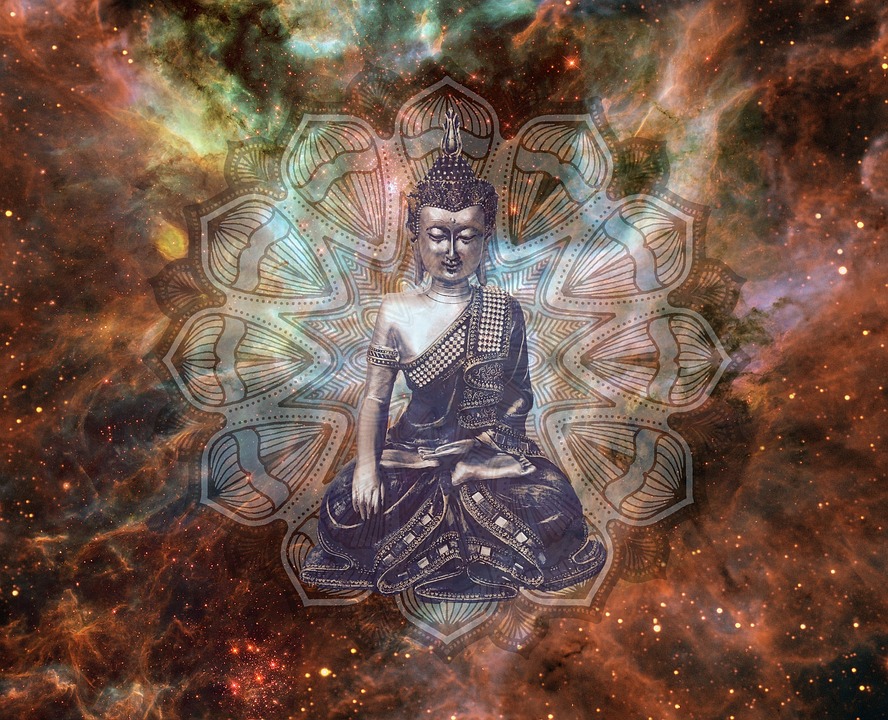In Buddhist philosophy and psychology, the mind and body are not separate entities. Even the medical texts of Buddhist culture treat the mind and body as part of a whole spectrum. Heal and calm the mind, and the body is healed and calmed; the reverse applies also. Tibetan Buddhists, in particular, have studied and practiced psycho-physical health. To understand this “ecosystem” of interdependence, the use of the terms “mind” and “body” need to be defined in the Buddhist way.
To the Buddhist, the concept of the mind is far broader than Western understanding.
“Mind is defined in Buddhism as a non-physical phenomenon which perceives, thinks, recognizes, experiences and reacts to the environment.” www.buddhism.kalachakranet.org
Lama Zopa Rinpoche points out that the mind, like a mirror, clearly reflects objects. The immune system is the body’s own mind. It highlights how wholesome emotional states promote health and negative emotions bring illness. In many ways, this Buddhist interpretation of the mind takes into account the whole workings of the central nervous system. Only meditation can explore and stabilize the mind, and, by default, simultaneously, the body.
 The body, to the Buddhist, is all that is prone to physical phenomena, including physical expression in reaction to a stimulus. Thereby, the body includes physical and emotional pain. This broad interpretation of the term “body” clearly identifies why it is difficult, for a Buddhist, to separate mind and body. To Western thinking, emotional pain is more of a mindset rather than a body function. Yet, for the Buddhist, emotional pain occurs when the mind fails to rise above negativity; it brings on body sickness. The two are inter-connected.
The body, to the Buddhist, is all that is prone to physical phenomena, including physical expression in reaction to a stimulus. Thereby, the body includes physical and emotional pain. This broad interpretation of the term “body” clearly identifies why it is difficult, for a Buddhist, to separate mind and body. To Western thinking, emotional pain is more of a mindset rather than a body function. Yet, for the Buddhist, emotional pain occurs when the mind fails to rise above negativity; it brings on body sickness. The two are inter-connected.
For the Buddhist, mind + body + “awareness” = consciousness. Physical, mental and spiritual states constantly interact in the realm of consciousness. The Western perspective that consciousness emerges from brain activity, for the Buddhist, amounts to a narrow, “materialistic” perspective. Through meditation, the Buddhist believes that an “intrinsic awareness” can develop beyond the brain and sensory perception.
Tibetan Buddhists identify 8 kinds of consciousness:
* Kun shi is the universal level. Here, “self” is distinct from objects of awareness.
* Sems is the thought or cognition level.
* 6 Senses Cognition is the 6th sense, co-ordinating sight, hearing, taste, smell, and touch.
Buddhists claim that their belief system is a spiritual science. In other words, it is “testable”. In the 1940s, a study was made of students at Harvard University. Based on their personal, reflective essays, students were classified as pessimists or optimists. Their health history was examined 30 years later. Pessimists, by their 40’s, had a more serious range of diseases and health problems than their optimistic counterparts. This is only one of a number of studies proving a close correlation between mental and physical health. Further, accumulating evidence is showing that mental ill-health can initiate physical ill-health. Anger, anxiety, and depression are becoming recognized as emotional poisons of the body.
Develop “sati” or mindfulness and remove the focus on “self”. Then, in the Buddhist way, the mind and body can be synchronized and healthy. There can be no Enlightenment when the body and mind are viewed as separate. For a Buddhist, mind, and body are one. They MUST be one!
Sources
www.healing.about.com
www.buddhism.kalachakranet.org
www.maithri.com
www.lifepositive.com
www.science-spirit.org





